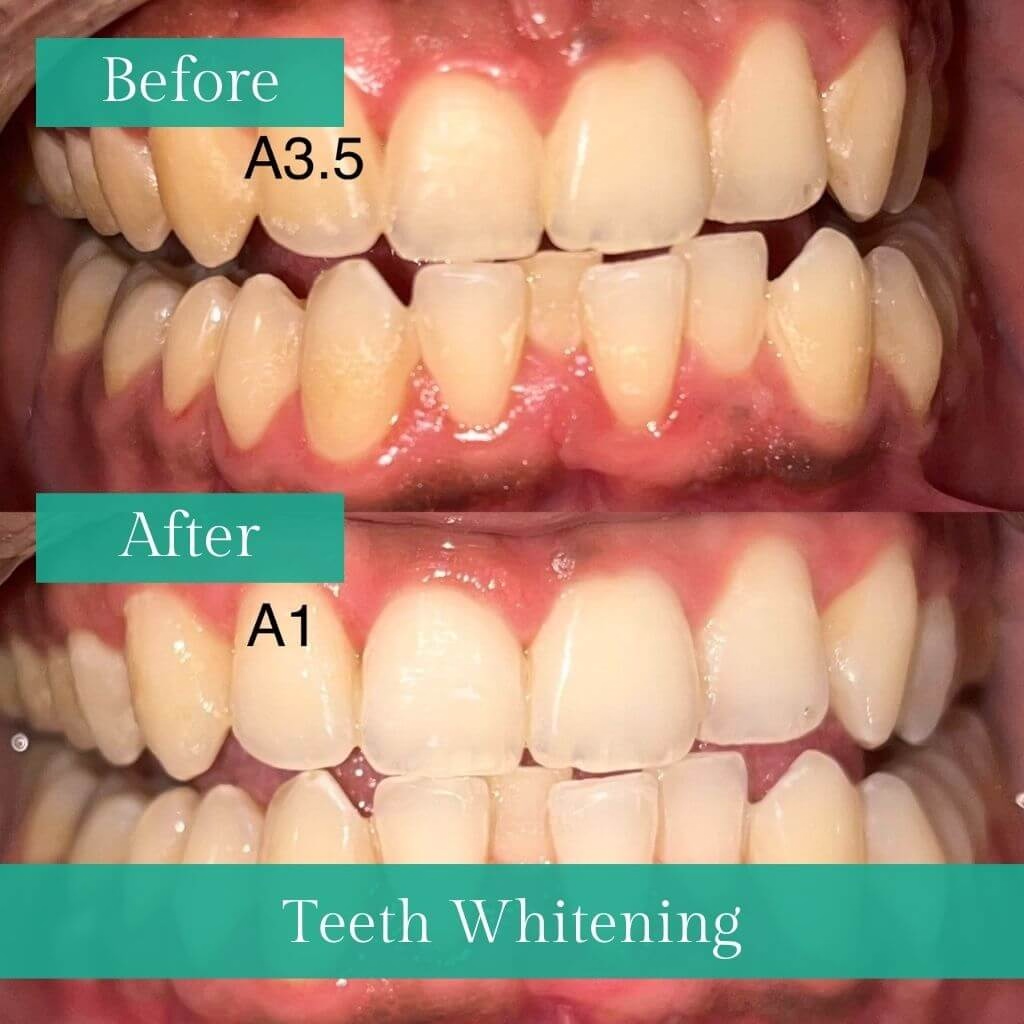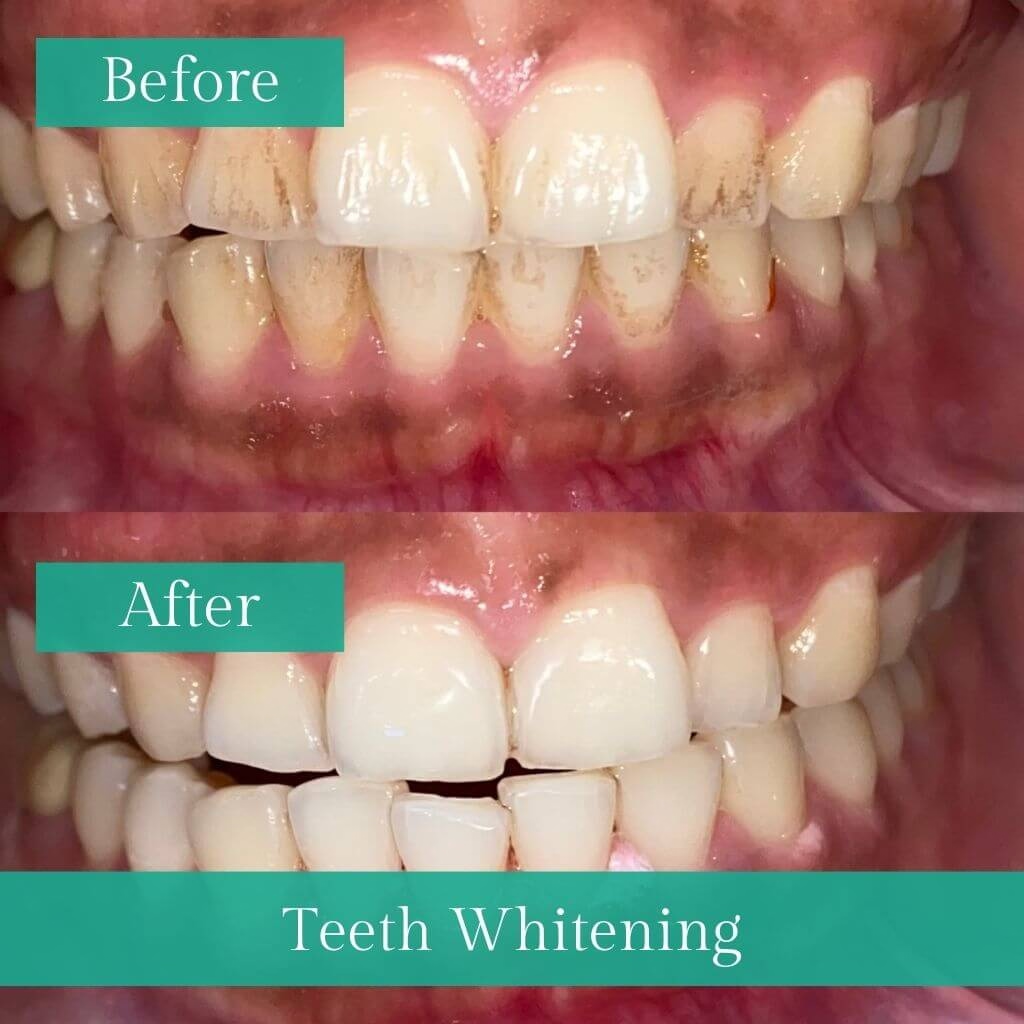Beat the Pain: Sensitivity Hacks While Teeth Whitening
Are you excited to brighten your smile but worried about that sudden jolt of pain after whitening? Have you experienced that sharp zing when sipping something cold post-treatment? You're not alone—and you don't have to suffer.
Many people crave a whiter smile but hesitate due to the dreaded side effect: tooth sensitivity. The good news? With the right hacks and preparation, you can enjoy a radiant, pain-free whitening experience.
In this detailed guide, we’ll walk you through everything you need to know—from why whitening causes sensitivity to simple, dentist-approved tricks to keep the discomfort at bay. Whether you're planning an at-home whitening or visiting your dentist, this is your go-to resource for a brighter, more comfortable smile.
Key Takeaways
- Tooth sensitivity during whitening is common but temporary and preventable.
- Pre-treatment steps like using desensitizing toothpaste can reduce discomfort.
- Post-whitening care—such as avoiding cold or acidic foods—is essential to protect your enamel.
- Customised dentist-supervised professional whitening tends to cause less sensitivity than over-the-counter kits.
- Several over-the-counter and prescription options are available to treat whitening-related sensitivity effectively.
What Is Teeth Whitening and Why Does It Cause Sensitivity?
Teeth whitening is the process of removing stains and discoloration from the enamel using bleaching agents like hydrogen peroxide or carbamide peroxide. Whether you choose over-the-counter strips, in-office lasers, or custom trays, the goal is a brighter, whiter smile.
But there's a catch. These bleaching agents work by penetrating the enamel to reach the discolored molecules underneath. In doing so, they temporarily open up microscopic pores in your enamel and expose dentin tubules—the direct paths to the nerves inside your teeth. This process often causes a short-term but sharp pain known as dentin hypersensitivity.
Many users describe this pain as a quick zing when exposed to cold water, air, or sweet foods—especially in the first 24–72 hours after whitening.
Benefits of Whitening—When Done Right
A bright smile isn't just aesthetic—it can elevate self-confidence, enhance first impressions, and make you feel more youthful. But the benefits go beyond beauty:
- Psychological boost: Studies show that people who whiten their teeth often feel more socially confident.
- Motivates better oral hygiene: People tend to brush, floss, and visit the dentist more regularly after whitening.
- Professional edge: In many professions, especially client-facing roles, a confident smile can go a long way.
Whitening done correctly—with proper sensitivity control—means enjoying all these benefits with negligible discomfort.
The Science Behind Whitening Sensitivity
To understand how to beat the heat (literally and figuratively), we need to get technical. Your teeth are made of:
- Enamel (outer shell): Hard but porous
- Dentin (beneath enamel): Softer, full of tubules
- Pulp (core): Contains nerves and blood vessels
During whitening, hydrogen peroxide breaks down into water and oxygen. These oxygen molecules penetrate the enamel and react with stained molecules. In doing so, they temporarily dehydrate the teeth and expose nerve endings, which amplifies sensations like cold or air.
The good news? This sensitivity is usually temporary—and there are strategies to prevent or drastically reduce it.
Is Whitening Safe for Your Teeth?
Yes—with professional oversight. Whitening doesn’t harm your enamel when done according to guidelines. But overuse, high concentrations, or skipping desensitizing steps can increase enamel wear or gum irritation.
Who should avoid aggressive whitening?
- People with thin enamel
- Those with untreated cavities or gum disease
- Patients already experiencing hypersensitivity
- Cracked or chipped teeth
- Fluorosis
Always consult your dentist before starting any whitening regimen, especially if you’ve had previous dental issues or restorations like veneers or crowns.
Comparing At-Home vs Professional Whitening and Sensitivity Levels
When comparing at-home whitening to in-office professional whitening, several key differences can affect your experience and outcome:
Speed of results is one of the most noticeable contrasts. At-home treatments typically take several days to a few weeks to show visible results, making them better suited for gradual changes. In contrast, in-office whitening can deliver dramatically whiter teeth in just one session, offering quick transformation—often within an hour.
The risk of sensitivity also varies. At-home whitening tends to cause mild to moderate sensitivity, especially when using lower-concentration bleaching agents. In-office treatments, while more effective, can lead to moderate to high sensitivity, particularly due to stronger gels and heat-activated processes.
In terms of customization, at-home options are limited—usually one-size-fits-all strips or trays. Professional whitening, however, is highly tailored to your individual needs, tooth structure, and sensitivity level, providing better precision and safety.
Lastly, monitoring plays a major role. At-home whitening is self-guided, leaving you responsible for proper application and timing. On the other hand, in-office treatments are fully dentist-supervised, ensuring optimal safety, effectiveness, and care throughout the process.
Sensitivity Tip: Combine both!. A professional in-office whitening session followed by at home maintenance using over the counter/ dentist prescribed gels in trays can yield a long lasting result.
Understanding Tooth Sensitivity During Whitening
What Actually Happens Inside Your Teeth
Whitening agents work by penetrating your enamel to break down stains trapped in the dentin (the layer beneath enamel). In doing so, they open microscopic tubules that connect to the nerve center of the tooth. These exposed tubules allow stimuli—like cold drinks or air—to reach the nerves, resulting in temporary dentin hypersensitivity.
Why Whitening Can Feel Like a Shockwave
The pain often described as a quick, sharp "zing" or electric shock occurs because the nerve endings are suddenly exposed. This effect is temporary, but without proper preparation and care, it can be quite uncomfortable. Understanding the cause is the first step to preventing the sting.
What to Avoid Before You Whiten
In the 2–3 days before whitening:
- Stop using abrasive whitening toothpastes
- Avoid alcohol-based mouthwash
- Do not brush too aggressively or use hard-bristled brushes
- Stay away from acidic foods and drinks
A healthy enamel surface improves both comfort and whitening results.
The Do's and Don'ts After Whitening
Avoid This for 48 Hours (No, Seriously)
After whitening, your enamel is slightly dehydrated and porous, making it more vulnerable to stains and pain. For at least 48 hours, avoid:
- Hot or cold beverages
- Acidic foods (e.g., lemons, tomatoes, soda)
- Staining agents (e.g., coffee, tea, red wine, berries)
- Avoid wearing bright lip Color
- Smoking or vaping
- Avoid turmeric or coloured food.
Foods and Drinks That Undermine Your Results
Stick to the "white diet" immediately after whitening:
- Rice, chicken, pasta (plain or white sauces)
- Bananas, peeled apples, potatoes
- Milk, cheese, yogurt
- Water and milk-based drinks
These neutral, light-colored foods help you maintain your results and reduce discomfort.
Success Rate of Teeth Whitening
Teeth whitening has a high success rate, especially when done professionally:
- In-office whitening has a success rate of 90–95% for removing extrinsic (surface) stains
- Dentist-supervised home kits: 80–90% success
- Over-the-counter products: 50–70%, depending on proper use and tooth condition
Whitening is most effective for:
- Yellow-toned stains
- Patients with healthy enamel and minimal restorations
- Non-smokers or people avoiding staining foods
Whitening does not work on crowns, veneers, or teeth with intrinsic (internal) stains from trauma, fluorosis or tetracycline.
Is Whitening Right for You?
Teeth whitening is ideal for:
- Adults with good oral health
- Those wanting to brighten surface-level discoloration
- Patients without extensive dental restorations
However, you should avoid or postpone whitening if you:
- Have untreated cavities or gum disease
- Have thin enamel or ongoing sensitivity
- Are pregnant or breastfeeding (consult your dentist first)
A dental consultation before whitening ensures the process is safe and effective for your unique situation.
Post-Whitening Care Checklist
To keep your smile white and sensitivity-free:
- Brush gently with desensitizing toothpaste
- Avoid staining foods and drinks for 48 hours
- Use a fluoride rinse or gel to help remineralize enamel
- Maintain dental checkups every 6 months
- Consider touch-up treatments every 6–12 months if needed
FAQs
Generally, yes. Dentists use stronger but safer formulas, and they can protect your gums and apply desensitizers pre- and post-treatment. They also tailor the session to your sensitivity level, making it more efficient and comfortable.
No. Not everyone experiences pain. Factors include:
- Natural enamel thickness
- Concentration of bleaching agent
- Duration of exposure
- Whether pre-treatment desensitizers were used
Sensitivity Hacks:
- Use potassium nitrate toothpaste 2 weeks before
- Avoid extreme temperatures in food and drinks post-whitening
- Apply fluoride gel after treatment to remineralize enamel
- Whitening effects can last 6–12 months depending on diet and habits.
- Sensitivity typically fades in 1–3 days post-treatment.
To extend your whitening:
- Avoid staining foods (coffee, red wine, soy sauce) for at least 48 hours post-treatment.
- Rinse your mouth after meals.
- Use a straw when drinking colored beverages.
Yes—when done in moderation and with ADA-approved products. Excessive bleaching or abrasive whitening toothpastes can wear enamel over time. Stick to recommended usage schedules (e.g., not more than once every 6 months professionally, or 1–2 times per week for at-home kits).
Very effective if you maintain it. Combine whitening with:
- Routine cleanings
- Smoking cessation
- Drinking plenty of water
- Switching to an enamel-strengthening toothpaste
Some people also opt for "top-up" trays once every few months to maintain brightness without full sessions.
Yes, but not constantly. Think of whitening like a facial—something to do periodically for maintenance. Over-whitening can cause translucency or enamel thinning. Instead, use low-concentration gels or LED-based systems intermittently.
Professional cleanings and stain prevention habits go a long way in preserving that glow—without needing constant bleaching.
Conclusion: Smile Bright and white
Whitening your teeth doesn’t have to come with the price of pain. With the right prep, smart product choices, and a bit of insider knowledge, you can absolutely achieve a brilliant smile without the burn of sensitivity.
From using desensitizing toothpaste and avoiding acidic foods to choosing dentist-supervised treatments, each step you take brings you closer to a confident, pain-free glow. Remember, your smile is one of the first things people notice—make sure it shines for all the right reasons.
Now that you're equipped with these sensitivity hacks, Go ahead—smile wide, stay cool, and let your sparkle show.





